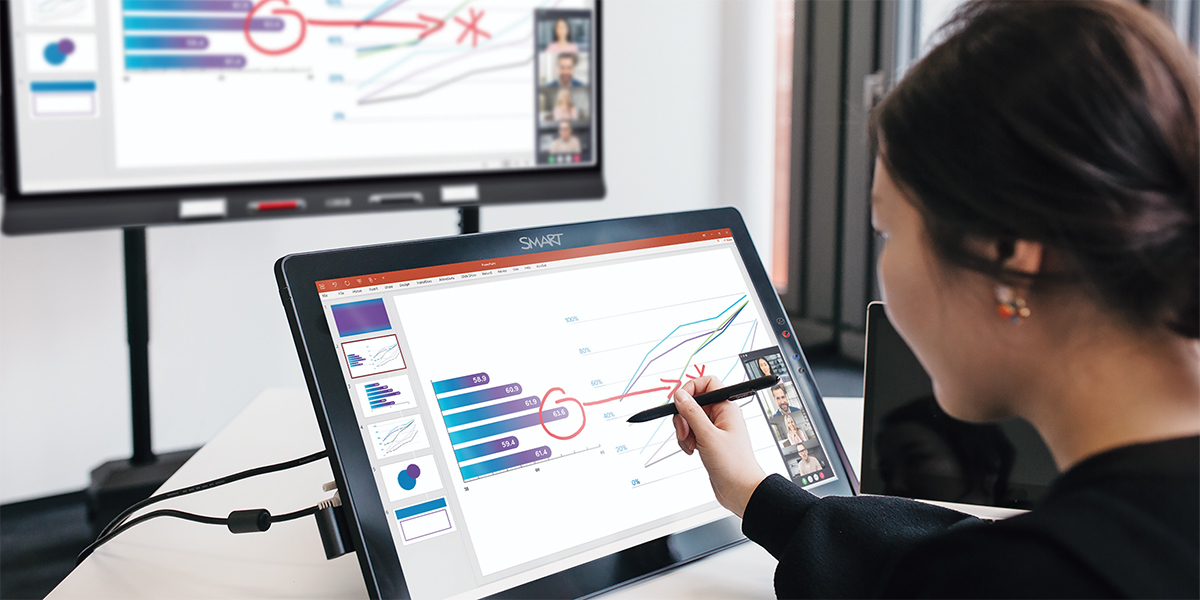see the word “collaboration” getting tossed around a lot—employers are constantly encouraging employees to collaborate and work as a team. The interesting part, in my opinion, is that while people might be working together, they aren’t actually contributing to meaningful collaboration. True collaboration requires a different approach and a different mindset.
The importance of collaboration in the workplace has never been greater. Our ability to connect with coworkers has changed; thus collaboration has changed as well.
To provide meaningful collaboration and enact change, we need to rethink how we come together as a team. In this wave of technology, collaboration tools help to brainstorm, ideate, and problem-solve, but implementing these together, with equity and inclusion, is where real collaboration happens.
I believe that engaging employees in meaningful collaboration that fosters ideation and innovation is integral for increasing productivity and building strong teams in the workplace. Collaboration is messy and cannot be easily replicated. It does not have a start or end point but is continuous.
Encouraging employees to come together to collaborate helps not only with productivity and innovation but with employee satisfaction. People like coming into work when they feel empowered to create, innovate, and be a part of a team. Those who feel like they are part of meaningful change and like they belong and are valued in their workplace are less likely to experience burnout.
In my experience, the most effective collaboration is flexible, agile, accommodating, and, most importantly, impactful. Today’s solutions, such as interactive displays and one-touch conferencing tools, are important for fostering meaningful collaboration and encourage teams to come together in impactful ways.
Whether you’re mapping out a new process or coming up with your next business innovation, collaboration is key to ensuring that ideas and concepts are the very best they can be. Better collaboration leads to more innovation, improved communication across functions and teams, and increased success overall.
As a leader, I understand collaboration as it relates to interaction. The two rely on each other to work effectively. Here are what I believe to be the three main types of collaboration:
- In-person collaboration: As more employees are returning to the office, companies require spaces and technology that help teams communicate, contribute, and solve problems more effectively. Transforming meetings from a place where work is discussed to a place where work gets done is crucial to fostering a collaborative environment.
- Hybrid and remote collaboration: Hybrid and remote collaboration are vital to today’s workforce, as they enable real-time problem solving, brainstorming, and communication even when people aren’t in the same room. Effective hybrid and remote collaboration requires technology that flexibly and equitably connects devices, people, content, and workspaces to ensure everyone feels like they are part of the overall process, decisions are made, and productivity is boosted, no matter where employees are located.
- Visual collaboration: Visual collaboration uses visual components to expand comprehension and communication. It is a key method of collaboration because it allows teams to communicate complex processes with clarity while also encouraging engagement. Requiring interactive tools such as video conferencing, screen and content sharing, and digital whiteboards provides a shared visual point of reference that helps teams communicate big ideas with better retention and faster innovation.
Whether you’re working to come back to the office or navigating the new remote workplace, I believe collaboration is key to engaging employees in meaningful work and provides a high return on investment. In the simplest terms, if you do this better, you will be more competitive in the marketplace, employee engagement and retention will be higher, and your business objectives can be accomplished more efficiently and effectively.

As a leader, transforming meetings from a place where work is discussed to a place where work gets done is crucial to fostering a collaborative environment. Meetings must be engaging and active. Just as elementary students may play with a new topic or subject, employees can play with a challenging idea and discover new solutions together.
Problem-solving cannot be done at a desk. It requires the freedom to be creative and explore intellectually.
I’ve seen real collaboration when employees are encouraged and empowered to fail. Whether it’s with a new collaborative tool or a challenging concept, encouraging employees to try a solution is where the real work happens. Whether it’s a success or failure, change is key.
In my workplace, we’ve implemented a few changes to our workspace to foster collaboration, and so can you:
- Open(ish) workspaces: Gone are the days of closed offices. We’ve adapted our workplace design to be open, inviting, and without barriers. We encourage our team to collaborate formally (in meetings and working groups) as well as informally (through conversation and informal questions). If collaboration is considered in physical design, employees are more likely to take part in it every day. It’s important to balance this with spaces that allow for individual focus as needed.
- Interactive displays for presentation and collaboration: Today, we can interact with all types of content through interactive displays, including images, PDFs, Microsoft Office® files, websites, and videos. With built-in video conferencing integrations, teams can connect both on-site and remote participants instantly from one central display. It’s essential to consider collaboration when implementing these pieces of technology in shared spaces.
- Collaborative online tools: Because today’s workforce may now be comprised of remote, on-site, and hybrid employees, our online tools need to be able to work together effectively and offer simultaneous interaction. Tools like Miro, Zoom, and Microsoft Teams™ can effectively fill these voids because of their inherent collaboration features. Teams can work simultaneously on a document without data being lost, while using an option like Zoom to offer visual and audio conversation.
We’ve designed our workspace and how we engage between coworkers with collaboration in mind. This has made an amazing impact on our employee’s satisfaction and engagement, which is rated by Merce Serota as best-in-class!
In order to effectively compete in the market, and as more and more employees are returning to the office to engage in face-to-face collaboration, employers must invest in workspaces and technology to help teams communicate, contribute, and solve problems more effectively. Designing your space and tools with collaboration in mind will ensure you can provide the necessary support for your collaborative office.
Collaboration is the front line of the competitive landscape for businesses today.
